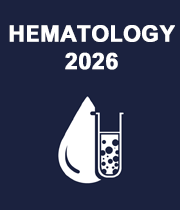Title : Microscopic image analysis of red blood cells for anemia diagnosis
Abstract:
Anemia is a common blood disorder that affects an estimated 1.62 billion people worldwide, which is approximately 24.8% of the global population. Women and children are particularly vulnerable to anemia, with an estimated 29% of non-pregnant women, 38% of pregnant women, and 47% of children under the age of five affected globally. Anemia can be diagnosed through blood tests, which measure the levels of red blood cells, hemoglobin, and other components in the blood.
Image analysis plays a crucial role in the diagnosis of anemia using microscopic blood images. The following are some of the ways in which image analysis can be used in the evaluation of anemia:
- Blood smear analysis is a common technique used to evaluate the morphology of red blood cells. Automated image analysis systems can be used to quantify the number, size, and shape of the red blood cells in a blood smear, which can provide information about the severity and type of anemia.
- Hemoglobin measurement is a critical component of the diagnosis and management of anemia. Automated image analysis systems can be used to accurately measure the level of hemoglobin in the blood by analyzing the color of red blood cells in microscopic images.
- Iron deficiency is a common cause of anemia. Image analysis can be used to assess the amount of iron in red blood cells and evaluate iron stores in the body.
- Image analysis can be used to differentiate between different types of anemia, such as iron-deficiency anemia, megaloblastic anemia, and sickle cell anemia, by analyzing the morphology of red blood cells. Overall, image analysis is a powerful tool in the diagnosis, management, and monitoring of anemia using microscopic blood images. It provides objective and quantitative data that can aid in the diagnosis and treatment of the disease, leading to better patient outcomes. The following are sample microscopic blood images of anemia for images analysis leads to automatic diagnosis and classification of anemia.
Audience Takeaway:
- Role of image analysis in detection/diagnosis of anemia disease.
- The research can be carried out based in the insights of the image analysis role.
- The faculty can use this as a case study of image processing while teaching to the students.
- The emerging technologies AI, ML can be used for more accurate diagnosis or classification of the disease.



